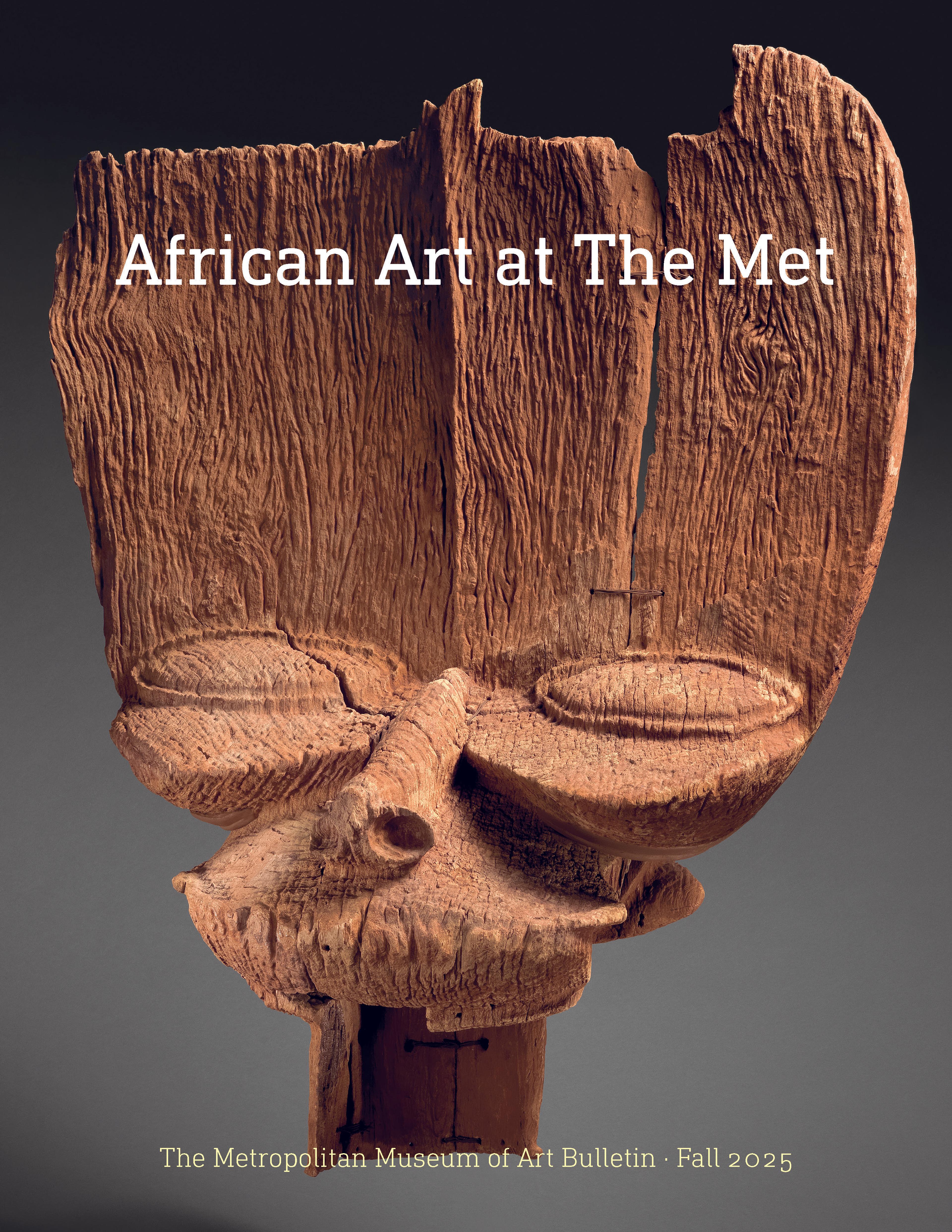Kpeliye’e headdress
Throughout the twentieth century, members of Poro, a Senufo initiation association, wore small, finely carved face masks as insignia. The masks, known as kpeliye'e, feature delicate oval faces with geometric projections at the sides. Raised and incised scarification patterns ornament their smooth, glossy surfaces. Considered feminine, the masks honor deceased Senufo elders with their grace and beauty. They provide a complement to the aggressive Senufo helmet masks also sponsored by fraternal organizations in the region. The feathers and animal horns attached to this example are unusual, and may have reflected its owner's power to counteract negative forces in the community.
Artwork Details
- Title:Kpeliye’e headdress
- Artist:Senufo artist
- Date:19th–mid-20th century
- Geography:Côte d'Ivoire, northern Côte d'Ivoire
- Culture:Senufo
- Medium:Wood, horns, quills, raffia fiber, cotton cloth, feathers, metal, applied organic materials
- Dimensions:H. 30 1/4 x W. 13 x D. 9 in. (76.8 x 33 x 22.9 cm)
- Classification:Wood-Sculpture
- Credit Line:The Michael C. Rockefeller Memorial Collection, Purchase, Nelson A. Rockefeller Gift, 1965
- Object Number:1978.412.489
- Curatorial Department: The Michael C. Rockefeller Wing
More Artwork
Research Resources
The Met provides unparalleled resources for research and welcomes an international community of students and scholars. The Met's Open Access API is where creators and researchers can connect to the The Met collection. Open Access data and public domain images are available for unrestricted commercial and noncommercial use without permission or fee.
To request images under copyright and other restrictions, please use this Image Request form.
Feedback
We continue to research and examine historical and cultural context for objects in The Met collection. If you have comments or questions about this object record, please contact us using the form below. The Museum looks forward to receiving your comments.
